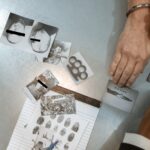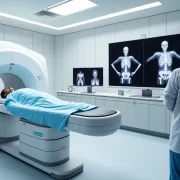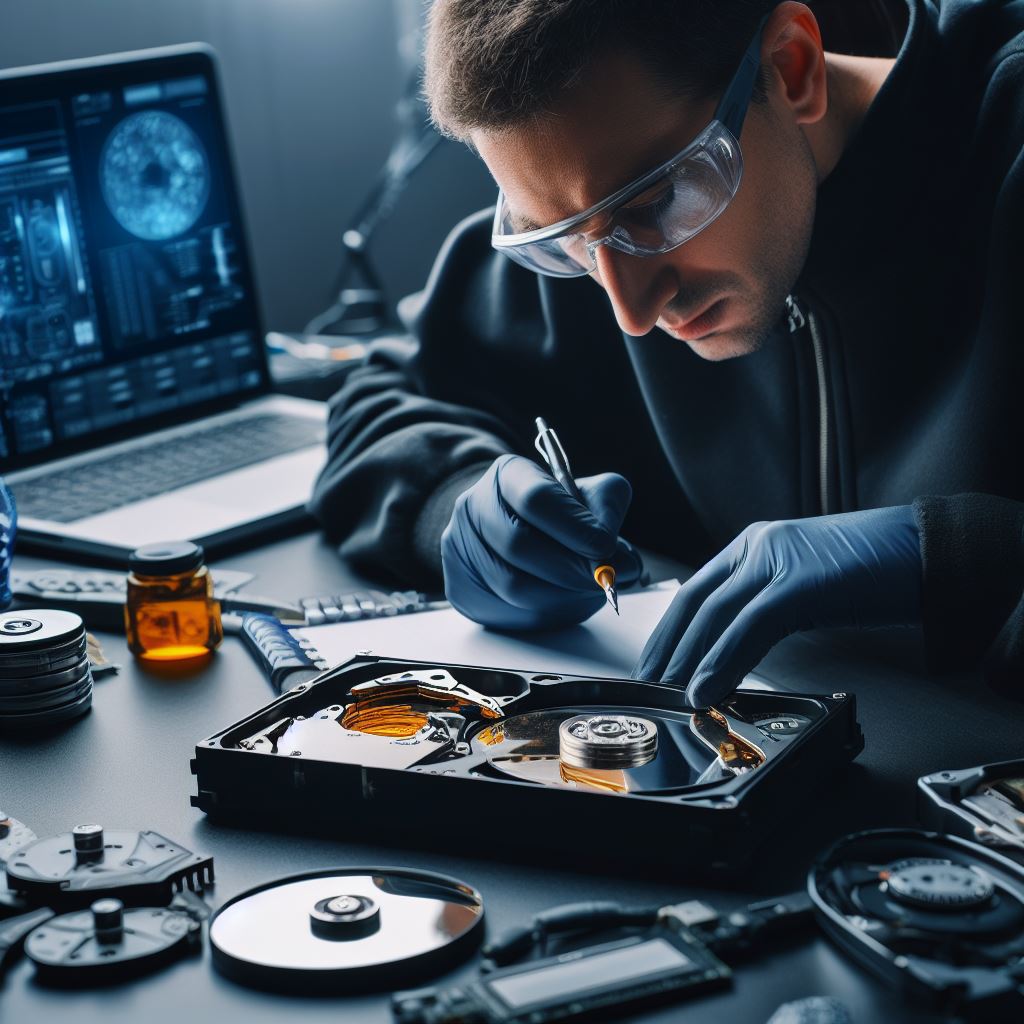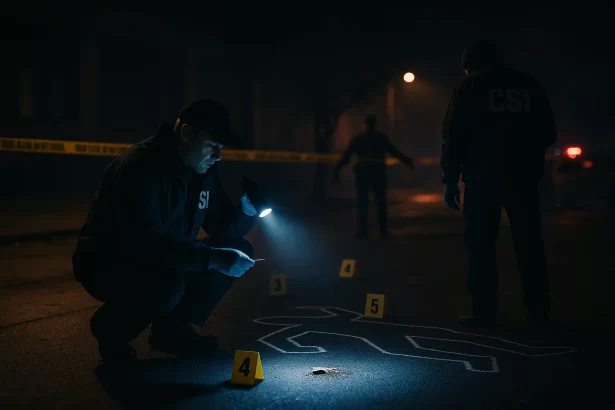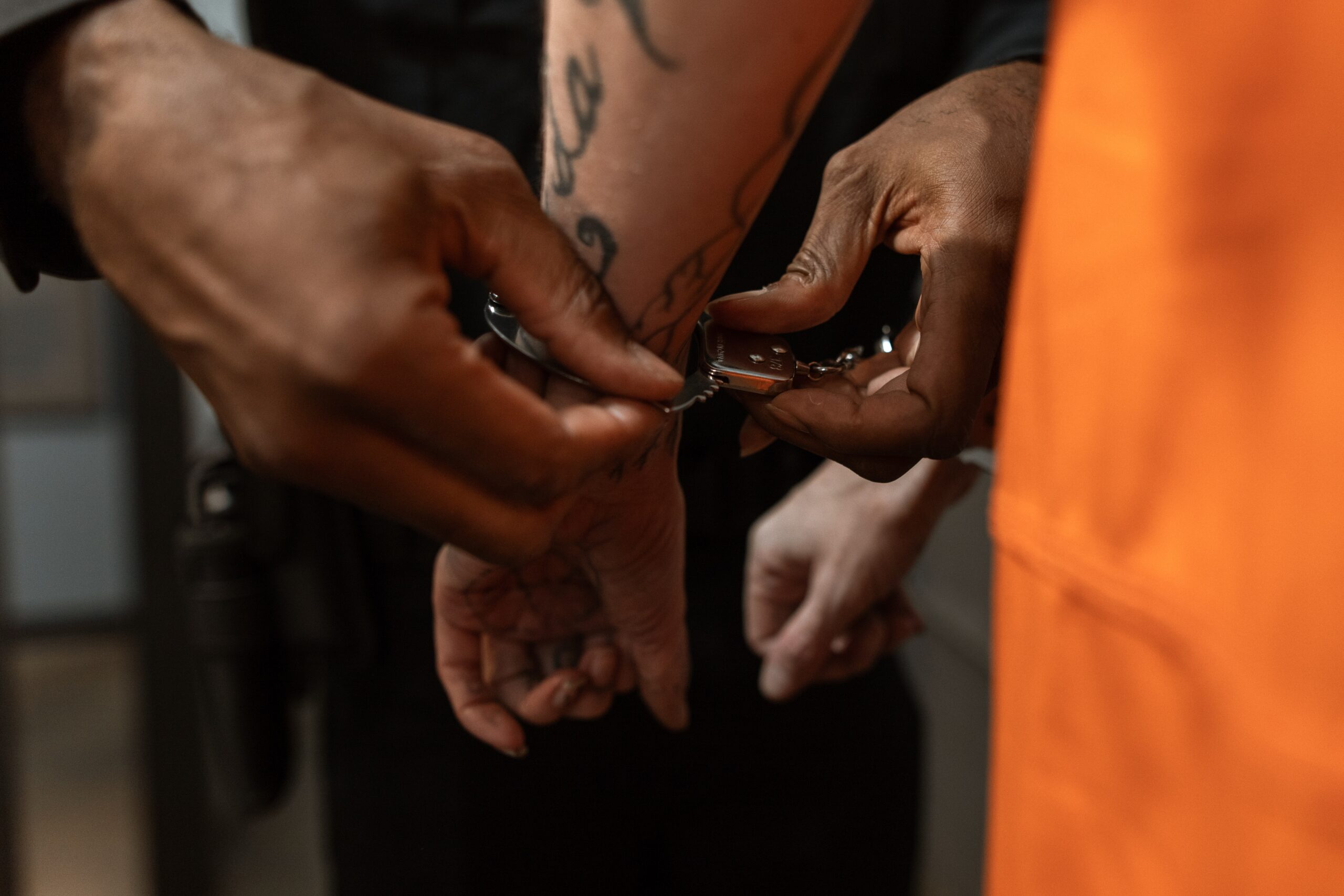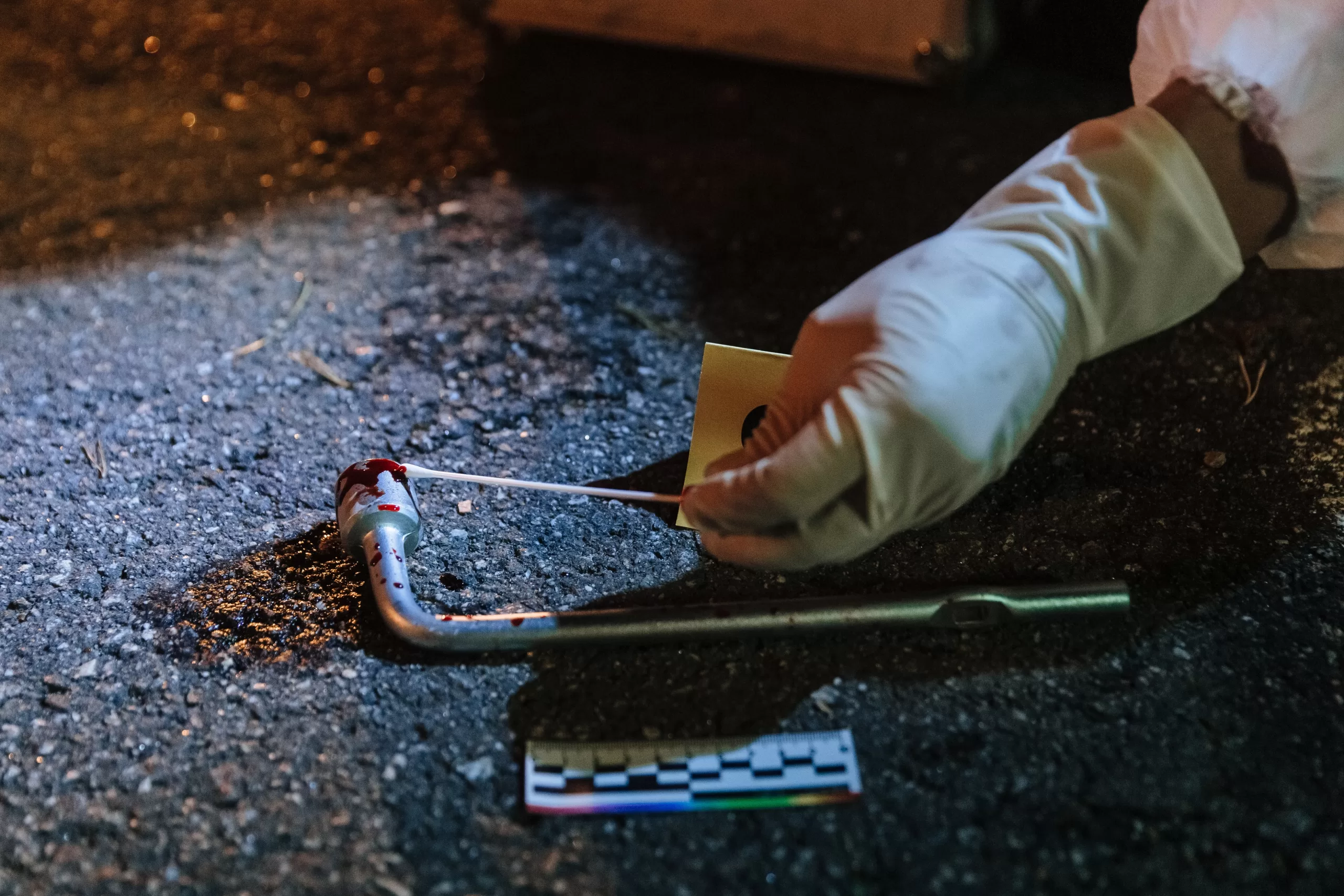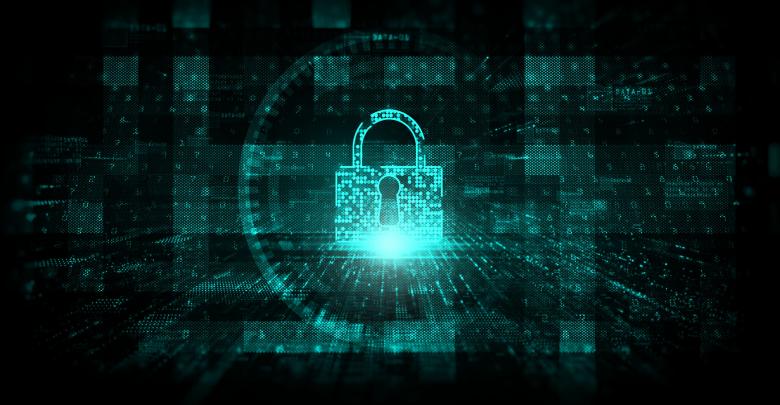The first moments at a crime scene are crucial, often determining whether a case is solved or remains unresolved indefinitely. Immediate steps—such as securing the area, meticulously documenting conditions, and preserving physical evidence—set the stage for the entire investigative process. The Technical Working Group on Crime Scene Investigation, comprising 44 forensic experts from across the United States, emphasizes that proper evidence handling and documentation directly influence case outcomes.
Crime Scene Investigation (CSI) represents the structured application of scientific principles to analyzing and interpreting physical evidence in criminal and civil cases. CSI combines numerous specialized disciplines, including forensic pathology, toxicology, digital forensics, and more, each contributing systematically to transform a chaotic crime scene into an organized repository of critical information. Through meticulous scientific methodologies, forensic investigators piece together the complex puzzle of evidence, unveiling crucial facts about events that would otherwise remain hidden.
While popular media often portrays CSI in a simplified and sensational manner, actual crime scene investigation demands rigorous attention to detail, advanced technological proficiency, and precise collaboration among highly trained professionals. As technology advances and investigative methodologies evolve, the foundational principles of careful observation, systematic documentation, and scientific analysis remain essential.
This comprehensive guide examines the fundamental components of CSI, from initial scene assessment and evidence collection through detailed scene reconstruction. It offers practical insights into foundational principles, specialized investigative techniques, cutting-edge technologies, and relevant legal considerations that shape forensic practices. Whether you’re an aspiring forensic scientist, active investigator, or fascinated by criminal investigations, this guide will deepen your understanding of the intricate interplay between science, technology, law enforcement, and criminal justice.
What Is Crime Scene Investigation?
Crime scene investigation builds upon the methodical documentation, collection, and analysis of physical evidence to establish facts and identify perpetrators. This process forms the foundation for successful criminal prosecutions and directly impacts case clearance rates.
Definition and importance of crime scene investigation
Crime scene investigation (CSI) encompasses the systematic process of documenting, collecting, preserving, and analyzing physical evidence found at crime scenes. At its core, CSI applies scientific techniques to gather evidence, providing investigators with crucial investigative leads. The term “forensic” originates from the Latin word “forensis,” meaning “public” or “forum,” reflecting the historical practice of presenting criminal cases in public forums.
Key aspects of CSI include:
- Evidence collection
- Scene documentation
- Forensic analysis
- Chain of custody maintenance
The meticulous work of CSI teams often determines the success of criminal investigations, making it a cornerstone of modern law enforcement.
The value of proper crime scene investigation cannot be overstated. The Technical Working Group on Crime Scene Investigation emphasizes that “physical evidence has the potential to play a critical role in the overall investigation and resolution of a suspected criminal act”. Furthermore, effective crime scene processing directly affects clearance rates—the percentage of crimes solved through arrest or exceptional means. Despite homicide being the most frequently cleared crime in the United States, the clearance rate has dropped from nearly 71% in 1980 to approximately 50% today.
Overview of CSI’s role in the criminal justice system
CSI plays a pivotal role in the criminal justice system, bridging the gap between crime occurrence and courtroom proceedings. Its contributions are multifaceted:
| Role | Description |
|---|---|
| Document Crime Scene | Document crime scenes through detailed photography, sketching, and notes |
| Evidence Gathering | Collecting physical evidence that can link suspects to crimes, including fingerprintsFingerprint, impression made by the papillary ridges on the ends of the fingers and thumbs. Fingerprints afford an infallible means of personal identification, because the ridge arrangement on every finger of every human being is unique and does not alter with growth or age. Fingerprints serve to reveal an individual’s true identity despite personal denial, assumed names, or changes in personal appearance resulting from age, disease, plastic surgery, or accident. The practice of utilizing fingerprints as a means of identification, referred to as dactyloscopy, is an indispensable aid to modern law enforcement. More, DNADNA, or Deoxyribonucleic Acid, is the genetic material found in cells, composed of a double helix structure. It serves as the genetic blueprint for all living organisms. More samples, fibers, and trace evidence |
| Scene Reconstruction | CSIs collaborate with detectives, forensic scientists, medical examiners, and legal professionals to reconstruct crime scenes |
| Prepare Crime Scene Reports | Prepare detailed reports documenting their findings and procedures—critical documents for both investigators and prosecutors. |
| Expert Testimony | Providing scientific explanations in court, including explaining complex forensic techniques and evidence collection methods to judges and juries. |
| Cold Case Resolution | Applying new technologies to unsolved cases |
By providing objective, scientific evidence, CSI strengthens the foundation of criminal prosecutions and enhances the overall integrity of the justice system.
The evolution of forensic science (Brief history of forensic science development)
Forensic science has evolved dramatically from basic observational techniques to sophisticated scientific methodologies. One of the earliest documented applications of forensic principles appeared in 6th-century China when Song Ci wrote “Xi Yuan Lu,” or “The Washing Away of Wrongs.” This pioneering text guided the examination of wounds and the determination of causes of death.
The 19th century saw major advances in the field. In the late 1880s, Alphonse Bertillon introduced anthropometry, a system that measured physical characteristics to identify criminals. During this same period, Sir Francis Galton conducted extensive research on fingerprints, establishing their uniqueness and permanence. By the early 20th century, fingerprinting had become widely accepted in criminal investigations.
Forensic science experienced remarkable growth throughout the 20th century. Edmond Locard, often called the “French Sherlock Holmes,” established one of the first forensic laboratories in Lyon, France in 1910. His famous “Exchange Principle“—stating that “every contact leaves a trace”—became a fundamental concept in modern forensic science.
The field underwent perhaps its most significant transformation in the mid-1980s with the advent of DNA matching. British geneticist Sir Alec Jeffreys discovered that DNA revealed both similarities and differences between family members, providing unprecedented identification accuracy. Since this breakthrough, DNA evidence has transformed prosecutions and exonerations, with over 375 individuals exonerated through DNA evidence since 1989.
These developments have transformed CSI from rudimentary observation techniques to a sophisticated, technology-driven field. Forensic science continues to evolve, incorporating cutting-edge technologies like AI and advanced imaging systems to enhance its capabilities in solving complex crimes.
Why proper crime scene processing matters
Careful, thorough crime scene investigation directly influences case outcomes. According to the National Institute of Justice, “actions taken at the outset of an investigation at a crime scene can play a pivotal role in the resolution of a case”. Proper processing ensures that physical evidence remains intact and potential witnesses are properly identified.
The consequences of improper handling can be severe. Failed investigations allow perpetrators to remain free, potentially victimizing others while the original victims never receive justice. Many homicides remain unsolved, specifically due to inadequately collected physical evidence.
As forensic technology advances, the importance of properly documented and preserved evidence grows. The Technical Working Group emphasizes that “the goal of this process is to recognize and preserve physical evidence that will yield reliable information to aid in the investigation”. This objective, systematic approach stands as the cornerstone of effective crime scene processing.
Fundamental Principles of Crime Scene Investigation
Crime scene investigation builds upon several core principles that guide investigators through the evidence collection and analysis process. These foundational concepts ensure investigations follow scientific protocols while meeting legal standards necessary for court proceedings.
Locard’s Exchange Principle and its implications
Locard’s Exchange Principle, formulated by Dr. Edmond Locard in the early 20th century, states that “every contact leaves a trace.” This fundamental concept establishes that when two objects make contact, materials transfer between them. Anyone entering or exiting a crime scene unavoidably leaves something behind while taking something away.
This principle provides the theoretical framework for connecting suspects to crime scenes through associative evidence. When perpetrators interact with victims or objects at a scene, they leave behind fingerprints, DNA, fibers, or other materials while simultaneously collecting trace evidence on their clothing, vehicles, or possessions.
The Golden State Killer investigation demonstrates this principle’s power. Investigators collected and analyzed minute traces of evidence that ultimately linked a suspect to multiple crime scenes decades after the offenses occurred. Even seemingly “clean” crime scenes contain valuable evidence when properly examined—a reality that guides modern forensic practice.
Consider the following implications:
- Physical evidence transfer
- Microscopic trace evidence
- Digital footprints
| Type of Evidence | Examples | Importance |
|---|---|---|
| Physical | Hair, fibers, DNA | Direct link to perpetrator |
| Trace | Pollen, soil particles | Establishes location |
| Digital | Emails, GPS data | Provides timeline and motive |
Scientific methodology in investigations
Crime scene investigators apply scientific methodology to ensure objectivity and reliability. However, unlike traditional laboratory science, forensic science must adapt these methods to study past events that cannot be directly observed or replicated.
The scientific approach in crime scene investigations follows this process:
- Observation: Carefully documenting the crime scene and collection of physical evidence
- Hypothesis formulation: Developing potential scenarios
- Testing: Analyzing collected evidence through further investigation and laboratory analysis
- Conclusion: Drawing evidence-based inferences
Traditional scientific methods require modification when examining past events. Crime scene analysts cannot observe or predict incidents directly as laboratory scientists would. Instead, they must employ what experts call “forensic scientific method,” which compares witness accounts with physical evidence to verify statements and reconstruct events.
This modified approach acknowledges the impossibility of experimentally replicating past events. Investigators test witnesses’ account accuracy against collected physical evidence rather than forming hypotheses solely from physical findings. This method establishes factual timelines while avoiding the pitfalls of scenario-building based exclusively on physical evidence.
Legal considerations and chain of custody
Evidence admissibility depends critically on proper documentation and preservation. Chain of custody provides chronological documentation showing who collected evidence, who possessed it, when transfers occurred, and why. The National Institute of Standards and Technology describes this process as tracking “the movement of evidence through its collection, safeguarding, and analysis lifecycle.”
Maintaining the chain of custody is crucial for ensuring the admissibility of evidence in court. This process involves:
- Proper evidence collection techniques
- Accurate documentation of each transfer
- Secure storage of evidence
- Transparent handling procedures
Maintaining an unbroken chain of custody is essential for several reasons:
- It ensures evidence remains free from contamination or tampering
- It confirms that the evidence presented in court is identical to what was collected
- It establishes accountability through documentation of all evidence handlers
- It addresses Fourth Amendment considerations regarding search and seizure
Proper documentation includes unique identifiers, collection date and time, names and signatures of all handlers, and transfer details. A single documentation gap can render evidence inadmissible, potentially undermining an entire case.
This legal framework reminds us that crime scene investigation combines scientific analysis with strict legal protocols that protect all parties’ rights. The Technical Working Group on Crime Scene Investigation emphasizes that investigators must “identify specific responsibilities, share preliminary information, and develop investigative plans following departmental policy and local, State, and Federal laws.”
The Crime Scene Investigation Process
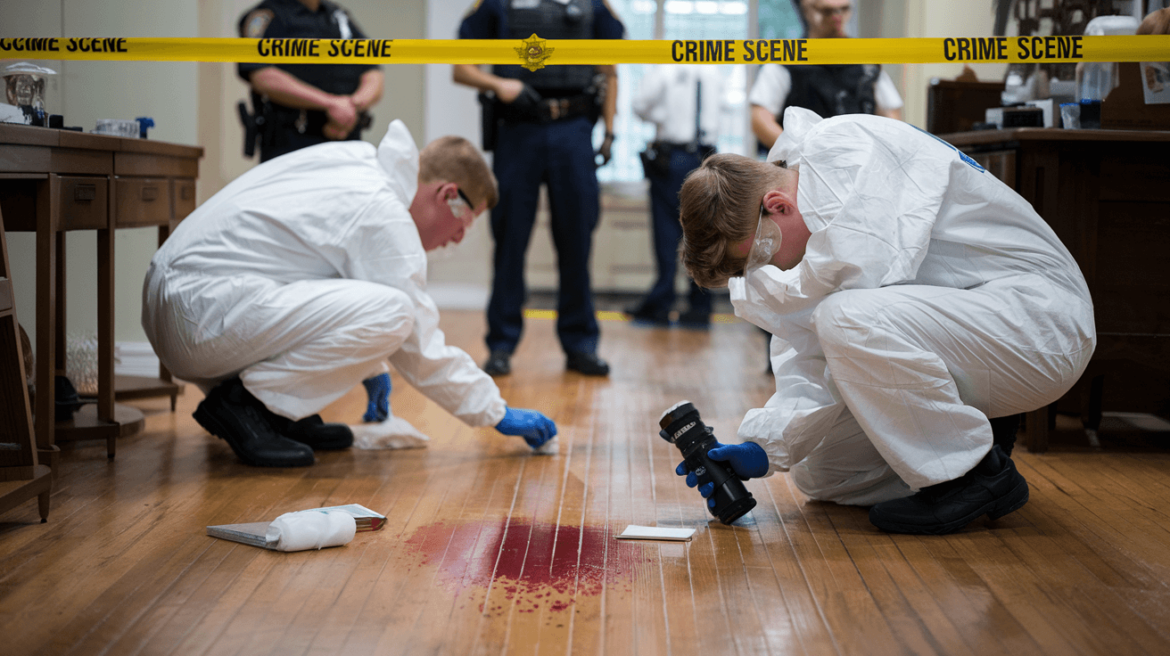
Crime scene investigation demands a systematic approach where each step builds upon the previous one to preserve evidence integrity. The Technical Working Group on Crime Scene Investigation stresses that proper documentation and evidence collection “should be practiced in every case,” ensuring consistent results regardless of scene complexity.
Scene security and initial assessment
First responding officers establish the foundation for the entire investigation. Upon arrival, they must treat the location as a crime scene until proven otherwise, making careful observations while ensuring both personal safety and scene preservation. The Organization of Scientific Area Committees (OSAC) for Forensic ScienceDiscover the fascinating field of Forensic Science, the application of scientific principles to legal matters. This post delves into its many disciplines, from DNA analysis to crime scene investigation, its importance in the justice system, and the core tenets that guide forensic experts in their quest for truth. More standard outlines that after “reasonably assessing and addressing any threats or risks of harm,” officers should “treat the scene as a crime scene, until determined otherwise.”
Initial assessment encompasses five critical tasks:
- Evaluating safety hazards that might endanger personnel entering the scene
- Identifying scene boundaries and establishing a secure perimeter
- Setting up physical barriers using tape, cones, or existing structures
- Documenting all persons entering or exiting once boundaries are established (controlling access).
- Protecting evidence from environmental threats or contamination (preserving evidence integrity).
During this initial phase, officers must document the scene’s original condition, recording environmental factors like lighting, temperature, and odors that might influence evidence interpretation. The responding officer should “make initial observations (look, listen, smell) to assess the scene and ensure officer safety before proceeding.”
Documentation methods and protocols
Documentation creates a permanent crime scene record and forms the foundation for subsequent analysis. According to OSAC standards, “proper documentation procedures ensure that the integrity of the documentation is maintained from the point of recording to the presentation of the documentation or content therein at the time of judicial proceedings.”
Key documentation methods include:
| Method | Description | Purpose |
|---|---|---|
| Photography | High-resolution images of the entire scene and individual evidence | Visual record for analysis and court presentation |
| Videography | Continuous footage of the crime scene | Captures spatial relationships and overall context |
| Sketching | Hand-drawn or digital diagrams | Provides measurements and layout information |
| Note-taking | Detailed written observations | Records investigator’s observations and actions |
Evidence collection and preservation techniques
Before collecting evidence, investigators must establish priorities based on evidence fragility, weather conditions, and scene dynamics. The National Institute of Justice emphasizes that “the investigator performing the collection must ensure tools are clean or sterilized and that gloves are changed between handling each sample.”
Proper evidence collection and preservation are critical for maintaining the chain of custody. Techniques include:
- Using appropriate collection tools (tweezers, swabs, etc.)
- Packaging evidence in suitable containers
- Labeling and sealing evidence properly
- Maintaining a detailed evidence log
Collection techniques differ by evidence type:
- Biological evidence: Methods include cuttings, wet absorption with sterile swabs, scraping, and tape lifting
- Trace evidence: Visual collection, tape lifting, and vacuuming (though vacuuming is “the least desirable collection method because there is a risk of cross contamination”)
- Pattern evidence: Photographing in place before collection, using specialized lighting and scales
Maintaining proper chain of custody requires documenting who collected evidence, who had possession, when transfers occurred, and why. Each item must be properly packaged, labeled with identifying information, and sealed to prevent contamination or tampering.
Scene reconstruction approaches
Scene reconstruction involves “evaluating the context of a scene and the physical evidence found there in an effort to identify what occurred and in what order it occurred.” This analytical process combines deductive and inductive reasoning to recreate the event sequence.
Crime scene reconstruction integrates physical evidence analysis with witness statements to determine the most likely sequence of events. This process involves:
- Blood pattern analysis to determine actions and positions
- Trajectory analysis for firearms evidence
- Digital recreation using specialized software
- Timeline development through evidence relationships
- Testing possible scenarios against physical evidence
Reconstruction represents the investigative culmination, where individual pieces of evidence combine to tell a coherent story about what occurred, when, and potentially by whom.
Modern technology has significantly enhanced reconstruction capabilities. Scene reconstruction helps investigators understand the sequence of events and test hypotheses. Common approaches include:
- Trajectory analysis
- Physical reconstruction
- 3D modeling and virtual reality simulations
- Blood spatter analysis
Drone-mounted sensors now complement ground-based laser scanning to create detailed 3D models. A National Institute of Justice study found that while “terrestrial laser scanning created more accurate images of staged outdoor crime scenes,” combining aerial and ground methods “allowed faster data capture over the entire crime scene.”
Types of Evidence
Evidence collected at crime scenes forms the scientific core of investigations, offering unique identification perspectives that connect suspects to locations and victims. Each evidence type provides distinct insights, helping us reconstruct events and identify perpetrators. The National Institute of Justice emphasizes that proper evidence collection directly impacts our ability to establish what happened and develop conclusive links to suspects.
Biological evidence (DNA, blood, bodily fluids)
Biological evidence includes materials originating from living organisms—primarily bodily fluids and tissues containing DNA. This category encompasses blood, saliva, semen, sloughed skin cells, hair, urine, and fecal material. The power of biological evidence lies in its ability to provide unique identification through DNA analysis, creating direct connections between suspects and crime scenes.
“Touch DNA” represents one of the most significant advancements in biological evidence collection we’ve seen in recent years. This technique involves swabbing items believed to have been handled by perpetrators to recover sloughed skin cells, even when no visible evidence exists. Many biological evidence types remain invisible to the naked eye, necessitating enhancement methods such as:
- Visual inspection under specialized lighting conditions
- Alternate light sources that cause specific biological materials to fluoresce
- Chemical enhancement techniques like luminol for blood detection
Successful collection requires extraordinary attention to contamination prevention. Investigators must change gloves between collecting different samples, use sterile collection tools, and ensure proper packaging with adequate air-drying of samples.
Trace evidence (fibers, soil, glass)
Trace evidence consists of microscopic materials transferred between people, objects, and locations during contact. Despite its minute size, trace evidence often provides powerful investigative leads. Common forms include fibers, soil, glass fragments, paint chips, and fire debris.
Edmond Locard’s Exchange Principle—that “every contact leaves a trace”—forms the philosophical foundation for trace evidence collection. This principle enables us to establish connections between victims, suspects, and crime scenes through meticulous collection and analysis of these nearly invisible transfers.
Glass evidence, though often reduced to tiny fragments, offers particularly valuable information. Analysis can reveal the direction of impact, the approximate angle and force applied, and even the sequence of multiple impacts. Similarly, paint evidence connects vehicles to collision scenes through layer composition analysis and chemical testing.
Pattern evidence (fingerprints, footwear, tire tracks)
Pattern evidence results from physical contact, creating distinctive impressions. These patterns typically exist as either two-dimensional impressions like fingerprints or three-dimensional marks such as bullet striations.
Fingerprints remain among the most valuable pattern evidence types in our arsenal. However, recovering them from firearms presents unique challenges due to textured grips and the often-poor condition of recovered weapons. Cyanoacrylate (superglue) fuming enhances fingerprint visibility through a chemical process that turns prints white.
Footwear and tire impressions frequently appear at crime scenes, providing insights into perpetrator numbers, movement patterns throughout the scene, and even approximate height based on shoe size. Based on impression depth and pattern distortion, footwear evidence can indicate whether a suspect was running or walking.
Digital evidence
Digital evidence has become increasingly vital in modern investigations. This category spans information from computers, mobile phones, and other data storage devices. These sources have expanded to include motor vehicles, drones, and cloud storage systems in recent years.
Did you know that a single smartphone can contain over 100,000 pages of data? This volume creates unique challenges for digital forensic investigators: extracting information from damaged devices, locating specific evidence pieces among vast data quantities, and ensuring their methods capture data without alteration. Despite these challenges, digital evidence often reveals critical details about crimes, suspect movements, and criminal networks.
Ballistic evidence
Ballistic evidence comprises firearms, bullets, casings, and gunshot residue. Through forensic firearm examination, specialists link bullets to specific weapons by analyzing the unique striations created by a gun’s barrel on fired projectiles.
Spent cartridges recovered from scenes can be examined for fingerprints or compared to test-fired samples to match them to specific weapons. This examination relies on distinctive tool marks left by firing pins and ejectors. Advanced microscopic analysis allows examiners to match these markings with remarkable precision.
Serial number examinations on recovered weapons help track ownership history, even when numbers have been deliberately altered. Forensic technicians can often recover obliterated serial numbers through specialized techniques like magnetic particle inspection and chemical restoration, providing crucial investigative connections.
The Crime Scene Investigation Team
Success in crime scene investigations depends on a highly coordinated team of professionals bringing specialized skills to the process. Working together, these experts transform seemingly unconnected evidence into cohesive intelligence that solves cases and delivers justice to victims.
Roles and responsibilities of team members
Crime scene investigators document and collect evidence, identifying critical forensic materials including fingerprints, footprints, blood, bodily fluids, hairs, and fibers. The core team consists of several key members, each with specific responsibilities:
| Team Member | Primary Responsibilities |
|---|---|
| First Officer on Scene | Preserving life, securing the crime scene, establishing cordons, documenting initial personnel and actions |
| Crime Scene Investigator (CSI) | Conducting initial assessments, establishing pathways, detailed scene examination, evidence collection and preservation, comprehensive documentation |
| Crime Scene Manager | Coordinating overall investigation, prioritizing tasks, managing resources and specialists, ensuring thorough evidence extraction |
| Scientific Support Coordinator | Overseeing scientific examination processes during major incidents, coordinating specialized forensic analyses |
Collaborative approaches to scene processing
Effective crime scene management integrates multiple disciplines and specialties. In a well-coordinated approach, several specialists examine the crime scene, each contributing their specific expertise.
The collaborative process begins during initial assessment, when the crime scene manager and senior investigator develop a comprehensive forensic strategy. This typically involves assembling a multidisciplinary team that includes CSIs and various forensic specialists.
Clear information sharing forms the backbone of effective scene processing. Teams must establish robust communication channels between scene examiners and investigation teams. This coordination leads to more effective forensic, photographic, and fingerprint evidence utilization.
The forensic intelligence approach represents a significant advancement, combining previously isolated evidence types into an integrated dataset. This methodology helps connect a series of crimes through associations based on both forensic evidence and situational information.
Working with other forensic specialists
Beyond the core team, crime scene investigations often require additional specialized expertise:
| Specialist | Primary Responsibilities |
|---|---|
| Forensic Pathologist | Estimate time of death, determine cause and manner of death, perform post-mortem examinations, interpret injuries and scene context |
| Forensic Scientist | Recommend appropriate samples, reconstruct event sequences, apply advanced analytical techniques |
| Trace EvidenceTrace evidence - Physical evidence that results from the transfer of small quantities of materials (e.g., hair, textile fibers, paint chips, glass fragments, gunshot residue particles). More Specialist | Examine microscopic evidence such as fibers, hair, and residues |
| Ballistics Expert | Analyze firearm and ammunition evidence, determine trajectories |
| DNA AnalystA designated person who examines and analyzes seized drugs or related materials, or directs such examinations to be done; independently has access to unsealed evidence in order to remove samples from the evidentiary material for examination and as a consequence of such examinations, signs reports for court or other purposes. More | Collect and analyze biological evidence to identify individuals involved |
| Scene Diagram Specialist (Plan Drawer) | Create detailed diagrams and visual reconstructions of crime scenes |
| Forensic Anthropologist | Analyze skeletal remains to determine identity, trauma, and relevant details |
| Forensic Entomologist | Study insect activity to estimate time since death |
| Forensic Botanist | Analyze plant evidence to determine locations, movements, and timelines |
| Forensic Odontologist | Analyze dental evidence for victim identification and bite-mark analysis |
| Digital Forensic Examiner | Recover and analyze data from electronic devices |
| Forensic Linguist | Analyze written or recorded communications for authorship and content analysis |
Based on investigative requirements, these forensic experts may provide their expertise remotely or be physically present at crime scenes. Integrating their specialized knowledge significantly enriches the investigative process, allowing for deeper insights into complex evidence and circumstances. This multidisciplinary collaboration is crucial, enhancing the team’s ability to reconstruct events accurately and increasing the likelihood of successfully resolving the case.
Coordinating with law enforcement
Seamless coordination between CSI teams and law enforcement is crucial for a successful investigation. This involves:
- Regular updates on case progress
- Joint strategy planning
- Sharing of relevant information
- Adherence to legal procedures and chain of custody
CSI teams and law enforcement can ensure a thorough and legally sound investigation process by working together. This collaborative approach maximizes the chances of solving crimes and bringing perpetrators to justice.
Specialized Crime Scene Situations
Some crime scenes present extraordinary challenges beyond standard investigation protocols. These complex scenarios require specialized approaches, equipment, and training while maintaining evidence integrity. The unique characteristics of underwater environments, fire scenes, and mass casualty incidents demand forensic specialists to adapt their techniques while preserving crucial evidence.
Underwater crime scenes
Underwater investigations pose distinct challenges that require significant modification of standard procedures. Water environments rapidly degrade evidence quality, with currents potentially dispersing critical materials across wide areas. Limited visibility further complicates documentation efforts, making specialized equipment and training essential.
Successful underwater evidence collection requires specialized tools, including:
- Underwater cameras with protective housings
- Metal detectors calibrated for submerged operation
- Lift bags for controlled evidence retrieval
- Airlift devices for underwater excavation
Documentation becomes particularly critical in these cases since “forensic pathologists and investigators will not experience the actual scene, but will see the human remains and items… only when retrieved by diving personnel”. This disconnect between recovery and analysis makes proper field documentation even more crucial than in standard investigations.
The effectiveness of underwater investigations depends heavily on properly trained diving personnel whose working time faces severe constraints from “depth of the scene, water temperature, environmental conditions (e.g., visibility, currents, waves), and other stress-related factors”. As dive depths increase, investigation time decreases due to higher air consumption rates and mandatory decompression requirements.
Fire and arson investigations
Fire scenes demand methodical examination to determine whether incidents resulted from accidental causes or deliberate action. Investigators must follow a systematic protocol that includes:
- Evaluating scene safety conditions before entry
- Preserving and securing the fire scene from contamination
- Documenting conditions through detailed notes, photographs, and sketches
- Collecting evidence using techniques that preserve burn patterns
Identifying the fire’s origin and cause remains the primary investigative goal. This process involves analyzing burn patterns, examining potential ignition sources, and collecting samples for laboratory analysis. In suspected arson cases, investigators specifically search for evidence such as “fire patterns (including multiple fire locations)… trailers, ignitable liquids or other unusual fuel distribution”.
Fire investigation combines elements of traditional crime scene work with specialized knowledge of fire behavior and combustion science. The dynamic nature of fire scenes presents unique challenges in evidence preservation, as the fire itself destroys evidence while firefighting efforts may further alter the scene.
Mass casualty incidents
Mass casualty incidents (MCIs) are defined as events that “overwhelm the local healthcare system, where the number of casualties vastly exceeds the local resources and capabilities in a short time”. At these scenes, investigators must balance thorough evidence collection with emergency response priorities—a delicate equilibrium that requires exceptional coordination.
Effective MCI management requires implementing incident command systems with clearly defined roles and responsibilities. The organizational structure typically includes an Incident Commander overseeing various branch directors and supervisors handling triage, treatment, and transportation. Proper documentation becomes essential for tracking patients and evidence amid chaotic conditions.
The forensic challenges in MCIs include:
- Maintaining chain of custody amid widespread evidence dispersion
- Correlating evidence to specific victims or perpetrators
- Documenting a scene that may span large geographical areas
- Coordinating with multiple responding agencies with different protocols
These specialized situations demonstrate how forensic science must adapt to unique environments while maintaining the scientific principles that ensure evidence integrity. Investigators can overcome these extraordinary challenges through specialized training, equipment, and methodologies to deliver reliable results.
Modern Technologies in CSI
Technology has fundamentally changed how we approach crime scene investigation, giving forensic teams powerful tools that enhance evidence collection, analysis, and presentation. These technological advancements deliver more precise documentation and help resolve cases that traditional methods might leave unsolved.
3D Scanning and Virtual Scene Reconstruction
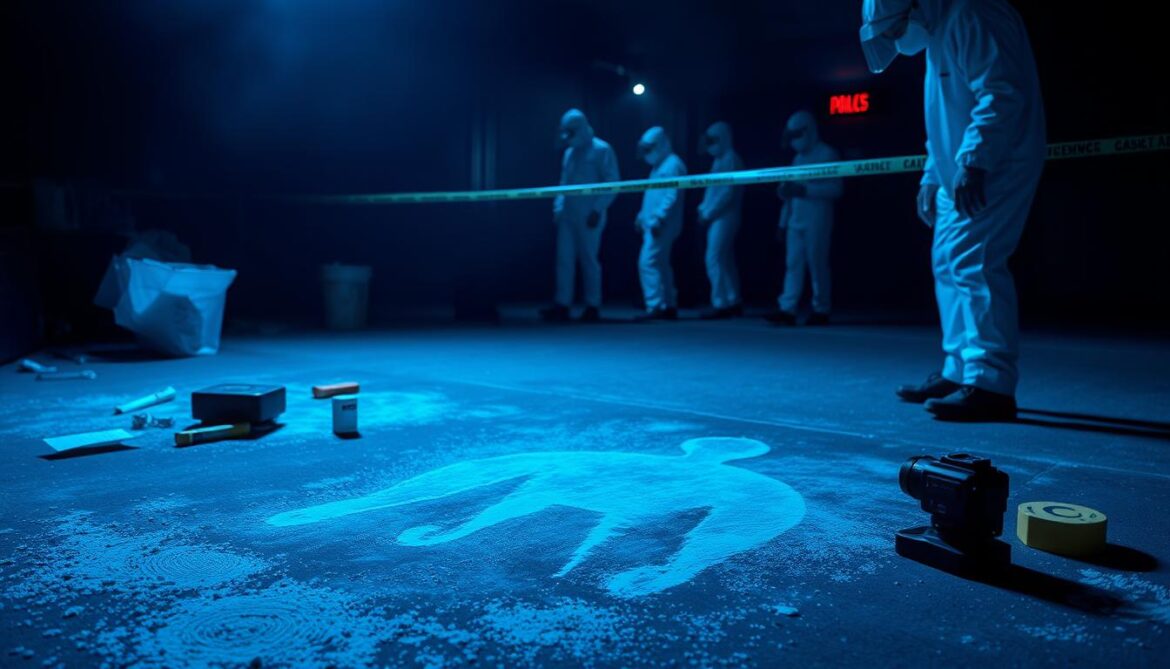
Three-dimensional laser scanning represents one of the most significant advances in crime scene documentation. These systems capture millimeter-precise spatial data, creating digital replicas that allow investigators to revisit crime scenes virtually months or even years later. Systems like FARO scanners capture millions of measurement points within minutes, preserving scene details that might otherwise go undocumented in traditional photography. These technologies offer:
- Comprehensive spatial data accurate to millimeters
- Virtual walkthroughs for investigators and jurors
- Permanent preservation of scene conditions
- The ability to revisit the scene digitally years later
- Measurement tools for evidence relationships
- Virtual reconstruction of event sequences
Research comparing traditional documentation with 3D scanning found that while investigators preferred three-dimensional videos, two-dimensional diagrams and photographs yielded higher average accuracies.
The financial considerations reveal striking differences between methods. Hand-drawn sketches cost approximately USD 0.79/minute to produce, while 3D scanning operations cost around USD 852.00/minute. Equipment costs show even more dramatic variation, from USD 82.00 for traditional sketching tools to USD 69,000.00 for advanced 3D scanners.
Despite these cost differences, 3D technology offers compelling advantages. Virtually visiting crime scenes allows investigators to re-examine evidence from multiple perspectives. Courtroom applications prove particularly valuable, as studies show these presentations significantly enhance juror understanding of complex evidence patterns such as bloodstain distribution analysis.
Advanced DNA analysis techniques
Modern forensic laboratories employ three primary DNA analysis methods:
- Polymerase chain reaction (PCR) – Amplifies small DNA samples, making them detectable
- Restriction fragment length polymorphism (RFLP) – Better suited for analyzing larger samples
- Mitochondrial DNA testing – Particularly valuable for degraded samples like bones or teeth17
Massively parallel sequencing (MPS) or Next Generation Sequencing (NGS) has transformed forensic DNA analysis by enabling simultaneous examination of multiple genetic markers in a single test. This technology detects variations in nucleotide sequences that traditional methods would miss, distinguishing between alleles that previously appeared identical.
The development of rapid DNA technologies now allows for preliminary results in as little as 90 minutes—a dramatic improvement over the days or weeks required by traditional laboratory methods. This speed can provide critical investigative leads while evidence remains fresh.
DNA technology continues to evolve, expanding investigative capabilities:
- Touch DNA analysis from minimal cellular material
- Familial DNA searching to identify relatives of unknown subjects
- Forensic genetic genealogy using public databases
- Phenotypic prediction to determine physical characteristics
- Rapid DNA analysis systems for quick preliminary results
- Environmental DNA to establish location history
These advances have revolutionized cold case investigations and provided investigative leads when traditional identification methods fail.
Digital forensics tools and applications
Digital forensics now encompasses five distinct branches—computer forensics, mobile device forensics, network forensics, database forensics, and forensic data analysis—collectively employing specialized hardware and advanced software to recover, preserve, and analyze digital evidence.
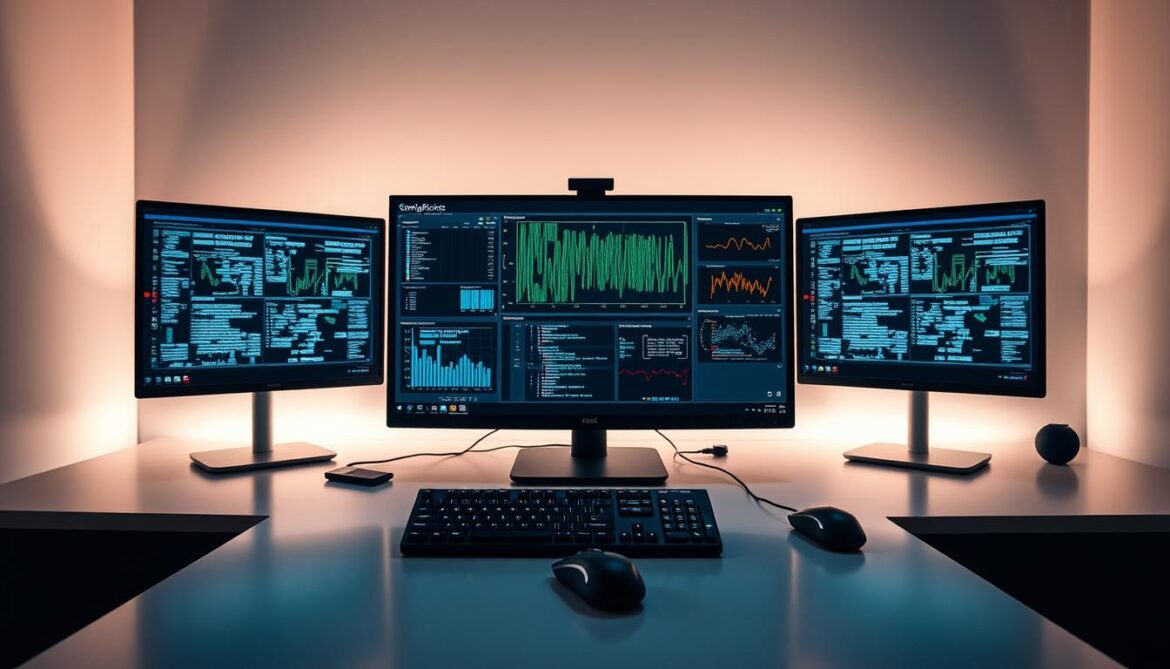
To ensure the integrity of evidence, hardware such as write-blockers is essential during the data examination process, preventing any alteration of the original data. In scenarios where data encryption is involved, forensic investigators utilize password recovery systems that incorporate several techniques to gain access:
- Brute-force attacks: Systematically testing every possible combination until the correct password is found.
- Dictionary attacks: Evaluating common password choices and their variations.
- Rainbow table attacks: Leveraging precomputed hash tables to reverse engineer passwords.
Mobile device analysis has emerged as a critical component in modern investigations. Specialized tools extract data, including call logs, text messages, location information, and details from various applications. This information is pivotal for reconstructing timelines, verifying alibis, or linking individuals to criminal activities.
In response to the growing need for digital evidence analysis, a variety of dedicated tools and applications have been developed, including:
- Forensic imaging software: Creates exact copies of digital data for analysis.
- Password recovery and encryption bypass tools: Assist in accessing secured data.
- Deleted data recovery software: Recovers data that has been removed from storage devices.
- Mobile device analysis platforms: Extract and analyze data from smartphones and other mobile gadgets.
- Cloud data recovery systems: Retrieve data stored on cloud platforms.
- Timeline analysis and visualization tools: Aid in constructing and understanding the sequence of digital events.
- Network traffic analysis software: Monitors and examines network communications.
Moreover, mastering digital forensics requires specialized training not only to proficiently operate these tools but also to ensure that evidence is handled properly, mitigating any risk of inadvertent alteration of volatile data.
Emerging technologies (AI, machine learning)
Artificial intelligence and machine learning applications have begun transforming forensic science. Machine learning algorithms analyze complex DNA profiles, automate fingerprint comparison, and process massive datasets far more efficiently than human analysts alone.
The potential applications continue expanding rapidly:
- Facial recognition systems identify individuals from partial images or video
- Age estimation algorithms analyze bone structures with increasing accuracy
- Cause of death determination receives AI-assisted classification support
- Artificial intelligence for pattern recognition in complex data
- Machine learning algorithms for case connection and analysis
- Drones for aerial scene documentation
- Ground-penetrating radar for locating buried evidence
- Chemical sensors for detecting trace evidence
- Portable instruments for field analysis of drugs and explosives
- Augmented reality for superimposing evidence information
While these technologies offer powerful capabilities, most experts emphasize that AI should complement human expertise rather than replace it. The forensic process’s interpretative skills, contextual understanding, and ethical judgment of trained investigators remain essential components.
The National Forensic Science Commission recognizes this evolving landscape and develops recommendations for maximizing emerging technologies while identifying potential scientific breakthroughs. Their work helps ensure that technological advances serve the fundamental goals of forensic science: accuracy, reliability, and justice.
Careers in Crime Scene Investigation
The field of crime scene investigation offers fulfilling career paths for those drawn to applying scientific principles in solving criminal cases. As demand for qualified professionals continues to grow, this field attracts individuals with keen attention to detail and strong analytical abilities. The blend of science, investigation, and legal knowledge creates an intellectually stimulating and socially impactful career.
Education and training requirements
Educational Requirements and Qualifications
Entry into the CSI field typically follows several educational pathways:
- Associate’s degrees in criminal justice or forensic science
- Bachelor’s degrees in forensic science, criminal justice, or natural sciences
- Master’s degrees for advanced positions and laboratory work
- Specialized certificates in crime scene investigation
- Police academy training for law enforcement-based positions
Most positions require a combination of formal education and practical training. Core coursework typically includes criminal justice, biology, chemistry, photography, and evidence processing techniques. Successful educational programs include coursework covering forensic techniques, criminal procedures, and scientific methodology. Job market data shows employers typically seek candidates with at least 24 semester hours in relevant fields such as computer science, digital forensics, engineering, information technology, or mathematics.
For those pursuing specialized roles like forensic accounting, candidates need a bachelor’s degree or higher in accounting or related fields with 24 semester hours in accounting (which may include up to six hours in business law). The career pathway typically follows two distinct phases: formal education provides the theoretical foundation, and hands-on training that builds practical skills. Most departments require 6-24 months of on-the-job training as a sworn police officer or a civilian.
Did you know that many forensic specialists begin their careers in other fields, like general police work or laboratory science, before specializing? This diverse background often provides valuable perspectives and complementary skills that enhance their effectiveness in forensic work.
Certification and professional development
Professional certification demonstrates competency and commitment to quality standards:
- International Association for Identification (IAI) Crime Scene CertificationCertification is a process through which a scientist can demonstrate their knowledge and competence in a particular field or in performing specific assays. It involves meeting established standards and requirements set by a certifying body. Here's how certification typically works: • Certifying Body: Certification is usually conducted by a recognized organization or certifying body. This organization is responsible for setting the standards and requirements for certification in a specific field or for particular assays. These standards are designed to ensure that individuals seeking certification have the necessary knowledge and skills.
• Eligibility Criteria: To pursue certification, a scientist must meet certain eligibility criteria, which may include educational qualifications, relevant work experience, and sometimes specific coursework or training. These criteria vary depending on the certification and the certifying body.
• Application: The scientist interested in certification typically submits an application to the certifying body. This application may include documentation of their qualifications, work experience, and other relevant information.
• Examination or Assessment: Depending on the certification process, candidates may be required to pass an examination or undergo an assessment to evaluate their knowledge and competence. The content and format of these assessments can vary widely.
• Practical Demonstrations: In some cases, particularly for certifications related to specific assays or laboratory techniques, candidates may be asked to demonstrate their practical skills by performing the assay competently under the scrutiny of evaluators.
• Continuing Education: Many certification programs require individuals to engage in ongoing professional development and continuing education to maintain their certification. This ensures that certified scientists stay current with advancements in their field.
• Certification Maintenance: Certified scientists must adhere to the certifying body's rules and guidelines for maintaining their certification. This may include periodic re-certification exams, continuing education credits, or other forms of assessment.
• Benefits of Certification: Certification offers several benefits to scientists and their employers. It serves as a mark of competence and expertise, providing confidence to employers and clients. It can also enhance career prospects and professional credibility.
• Specialization: Some scientists may choose to pursue certification in a specific field or for a particular assay, allowing them to demonstrate their proficiency in a specialized area of their discipline.
Certification is an important process that helps ensure the quality and reliability of scientific work. It provides a means for scientists to validate their expertise and competence, which is especially valuable in fields where accuracy and precision are critical, such as healthcare, laboratory sciences, and various technical professions. More - American Board of Criminalistics (ABC) certification
- International Crime Scene Investigators Association (ICSIA) certification
- Digital Forensics Certification Board (DFCB) credentials
- State-specific certification programs
These certifications typically require education, experience, training, and successful examination completion. Many require continuing education to maintain credentials. The International Association for Identification (IAI) offers several certification levels, including:
- Certified Crime Scene Investigator (CCSI)
- Certified Crime Scene Analyst (CCSA)
- Certified Senior Crime Scene Analyst (CSCSA)
Maintaining these certifications requires accumulating 80 Continuing Education/Professional Development Credits every five years. This ongoing education ensures forensic professionals stay current with evolving technologies and methodologies.
Beyond IAI certification, specialists often pursue additional credentials in fingerprint analysis, digital forensics, or other specialized areas. Interestingly, some federal agencies require the Certified Latent PrintLatent print - A fingerprint, palm print or footprint that is not readily visible under normal lighting. More Examiner certification from IAI for Fingerprint Specialist positions (GS 12 and above). These certifications serve as career advancement tools and quality assurance mechanisms for the entire field.
Job opportunities and specializations
Forensic science offers diverse opportunities for specialization as professionals gain experience in the field. Investigators may further focus their expertise in several niche areas, including:
- Bloodstain Pattern Analysis
- Fingerprint Examination
- Digital Forensics
- Forensic Photography
- Shooting Reconstruction
- Major Case Investigation
- Death Investigation
- Arson"Arson" is a criminal act involving intentionally and unlawfully setting fire to buildings, structures, or other property types. It is a serious offense and is considered a crime in most legal jurisdictions. Here are key points about arson: • Criminal Intent: Arson is characterized by the deliberate intent to start a fire. This means that the act is committed with the knowledge and purpose of causing damage or destruction by fire.
• Targets: Arson can involve setting fire to various targets, including residential buildings, commercial properties, vehicles, forests, and personal belongings. The severity of the crime can vary depending on the target and the extent of the damage caused.
• Motives: Arson can be motivated by various factors, including financial gain (e.g., insurance fraud), revenge, vandalism, arson-for-hire schemes, or even psychological issues. Investigators often consider motives when examining arson cases.
• Legal Consequences: Arson is a serious criminal offense, and those found guilty of arson can face significant legal consequences, including imprisonment, fines, and restitution to compensate for the damage caused.
• Investigation: Arson investigations are conducted to determine the cause and origin of the fire. These investigations involve collecting and analyzing physical evidence, examining fire patterns, and interviewing witnesses. Arson investigators often work in conjunction with law enforcement agencies and fire departments.
• Forensic Science: Forensic science plays a crucial role in arson investigations. Experts in the field may use techniques such as fire debris analysis, accelerant detection, and fire pattern analysis to gather evidence and establish the circumstances surrounding the fire.
• Legal Definitions: Legal definitions and penalties for arson can vary by jurisdiction. Some jurisdictions differentiate between degrees of arson, categorizing them based on factors such as intent, degree of damage, and whether human life was endangered.
• Insurance Fraud: In some cases, arson is committed with the intent to defraud insurance companies. Perpetrators may set fire to property to collect insurance payouts. Insurance fraud investigations may involve cooperation between law enforcement and insurance investigators.
• Fatal Fires: Arson that results in the loss of human life may lead to homicide charges in addition to arson charges. Prosecution for such cases can be particularly severe.
• Prevention and Fire Safety: Arson prevention measures include fire safety education, security measures for properties, and the installation of fire alarms and surveillance systems to deter potential arsonists.
• Arson Investigations Units: Many law enforcement agencies have specialized arson investigation units staffed by experts trained in fire science and forensic analysis.
• Arson as a Form of Terrorism: In some instances, arson is used as a form of terrorism, targeting government buildings, religious institutions, or symbolic structures to convey a political or ideological message.
In summary, arson is a criminal act involving the intentional setting of fires to cause damage or destruction. It is a serious offense with various motives and legal consequences. Arson investigations rely on forensic science to gather evidence, and prevention efforts often focus on fire safety and security measures. More Investigation
Specializing in any of these areas typically requires additional training, supervised casework, and, in many instances, certification that validates competency in the specialty.
Crime scene investigators are employed across a wide array of settings, such as:
- Law enforcement agencies (local, state, federal)
- Medical examiners’ offices
- Private forensic laboratories
- Insurance companies
- Legal firms
The employment outlook for forensic science technicians is notably strong. According to the Bureau of Labor Statistics, the field is projected to grow by 13% from 2022 to 2032, which is significantly faster than the national average for all occupations. This robust growth is reflected in competitive compensation, with forensic science technicians earning a median annual wage of approximately $64,940 as of May 2023.
As the field continues to develop, forensic professionals are able to align their career paths with areas that best match their interests and aptitudes, from conducting blood pattern analysis to mastering digital forensic techniques. This specialization enhances investigative capabilities and contributes to more focused and effective approaches in the pursuit of justice.
Challenges and rewards of the profession
The forensic profession presents distinct challenges that prospective professionals should carefully consider. Crime scene investigators frequently work irregular hours, including nights, weekends, and holidays, and are often on-call for emergency response. They encounter disturbing scenes that can take an emotional toll over time, requiring robust coping mechanisms and emotional resilience.
Despite these challenges, many professionals find profound satisfaction in this career path. The intellectual challenge of solving complex puzzles, making meaningful contributions to society, and working on diverse cases provides substantial rewards.
For those considering this career, the most successful candidates combine scientific aptitude with strong communication skills, meticulous attention to detail, and the emotional stability needed to work in high-stress environments. The field rewards those who approach each case with both scientific rigor and compassionate understanding of the human elements involved.
Conclusion
Crime scene investigation forms a critical foundation of modern criminal justice, merging scientific principles with methodical processes to uncover truth. Today’s techniques reflect decades of evolution from basic observational methods to sophisticated analytical approaches. While technology continues to advance—from DNA profiling breakthroughs to artificial intelligence applications—Locard’s Exchange Principle remains the philosophical cornerstone of forensic science, reminding us that physical evidence provides the most reliable narrative of events.
Professional excellence in crime scene investigation demands rigorous education, continuous training, and adaptability. Today’s forensic experts must master both traditional techniques like fingerprint analysis and cutting-edge tools such as 3D scanning, while maintaining unwavering adherence to legal protocols. The most effective investigators balance scientific precision with practical realities, often working under challenging conditions to preserve crucial evidence that might otherwise be lost.
Looking forward, crime scene investigations will increasingly integrate digital technologies, artificial intelligence, and advanced analytical methods. These emerging tools promise enhanced accuracy in evidence analysis and more comprehensive scene documentation. The field’s expansion creates new career paths for qualified professionals across law enforcement agencies, private laboratories, and specialized forensic services.
Crime scene investigation represents a dynamic intersection where science serves justice, offering meaningful opportunities to protect communities while advancing professional expertise. The field continues to evolve, addressing new challenges like digital crime scenes and applying advanced technologies to cold cases. These developments underscore the importance of forensic science in maintaining the integrity of our justice system.
Ultimately, forensic science must balance societal benefits with the protection of individual rights. This approach ensures that justice is served with integrity and precision. For those interested in delving deeper into forensic investigation, many universities now offer specialized courses that prepare the next generation of professionals to carry this important work forward.
References and Further Readings
[1] – https://www.sifs.in/blog-details/history-of-forensic-science
[2] – https://www.fbi.gov/about-us/lab/forensic-science-communications/fsc/april2000/twgcsi.pdf
[3] – https://www.policechiefmagazine.org/who-is-processing-crime-scene/
[4] – https://forensictraininguk.org/what-is-the-role-and-responsibilities-of-a-police-crime-scene-investigator/
[5] – https://www.forensicscolleges.com/blog/history-of-forensics
[6] – https://www.ojp.gov/pdffiles1/nij/178280.pdf
[7] – https://nij.ojp.gov/topics/law-enforcement/investigations/crime-scene
[8] – https://www.crime-scene-investigator.net/roles-and-responsibilities.html
[9] – https://nij.ojp.gov/topics/articles/using-forensic-intelligence-combat-serial-and-organized-violent-crimes
[10] – https://www.secretservice.gov/investigations/forensic
[11] – https://pmc.ncbi.nlm.nih.gov/articles/PMC10220300/
[12] – https://nij.ojp.gov/topics/articles/guide-investigating-fire-and-arson
[13] – https://www.ncbi.nlm.nih.gov/books/NBK482373/
[14] – https://nij.ojp.gov/topics/articles/crime-scene-documentation-weighing-merits-three-dimensional-laser-scanning
[15] – https://www.sciencedirect.com/science/article/pii/S1355030624000340
[16] – https://pmc.ncbi.nlm.nih.gov/articles/PMC8457771/
[17] – https://ovc.ojp.gov/sites/g/files/xyckuh226/files/publications/bulletins/dna_4_2001/dna7_4_01.html
[18] – https://www.dhs.gov/sites/default/files/publications/Digital-Forensics-Tools-TN_0716-508.pdf
[19] – https://www.sciencedirect.com/science/article/pii/S1872497323001692
[20] – https://pmc.ncbi.nlm.nih.gov/articles/PMC11513614/
[21] – https://www.justice.gov/archives/ag/advancing-justice-through-dna-technology-using-dna-solve-crimes
[22] – https://asuonline.asu.edu/newsroom/online-learning-tips/how-to-become-crime-scene-investigator/
[23] – https://fbijobs.gov/forensics
[24] – https://www.criminaljusticedegreeschools.com/careers/crime-scene-investigator/
[25] – https://theiai.org/crime_scene_faqs.php
[26] – https://www.dea.gov/careers/forensic-sciences
[27] – https://www.alliant.edu/blog/is-forensic-science-a-good-career
[28] – https://coldcaseinc.com/is-a-crime-scene-investigator-a-good-career/
[29] – https://forensicscienceacademy.org/f/the-emotional-challenges-of-being-a-csi



